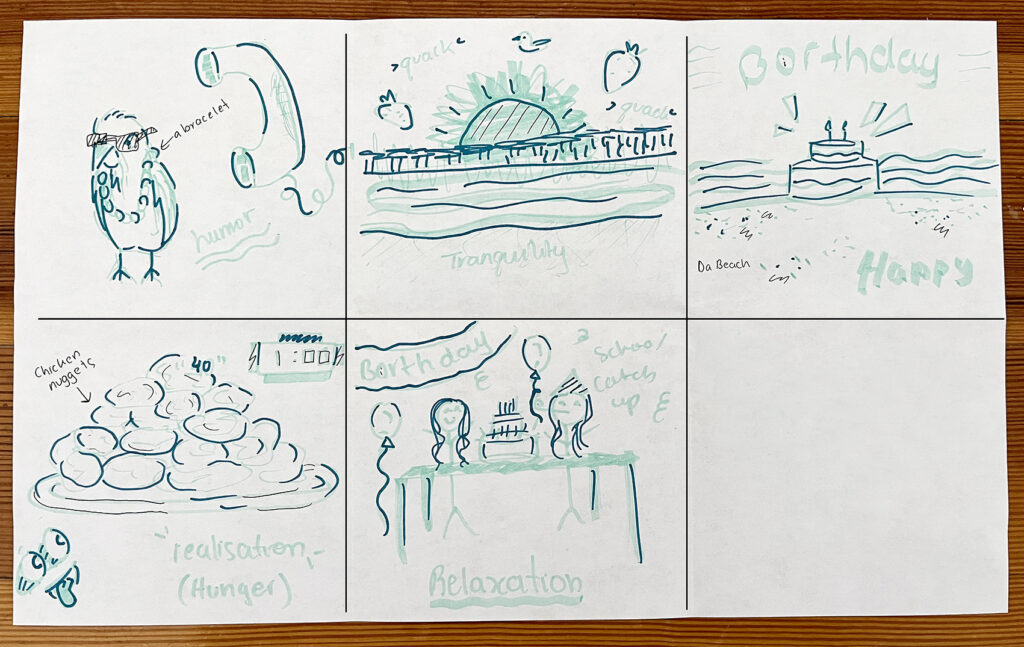
This week the focus in the personal well-being course was on emotions — particularly on cultivating positive emotions. Savoring is a common technique, developed by psychologists Bryant and Veroff (2007), used in positive psychology to consciously (re)experience, appreciate, intensify, and extend the feelings we get from positive emotions and experiences.
Building on the Savoring technique, I created the Visual Empathy in-class activity. This activity integrates the social awareness component integral to emotional intelligence with collaborative imagination and savoring. The work of Brendan O’Connor has shown how the act of imagining and sharing events together with others can lead to stronger social connections.
The following is general guidance to run this activity:
Preparation. The week before, I asked students to bring to class an object or a photo of a situation or event or interaction that had made them experienced positive emotions; that is, to bring something physical they could share with others. You will also need colored markers and sheets of papers for each student. To save paper, I used a legal size sheet of paper for each student folded into six parts to create six different “canvases.” Students then drew one unique experience per square — as shown above.
Activity. Working in groups of six, students took turns to share their positive experience with as much detail as they could with the other members, also showing the visual aid they brought. Students were asked to talk during at least 90 seconds, explain the specific emotion/s they felt, the time and place of the experience, what they were wearing and doing, whether they were alone or with other people, and any other relevant piece of information that could help the other members of the group empathize and feel the same emotion. While one student was sharing, the others were imagining how to visually represent both the positive experience and the emotion/s. Each student created visual vignettes representing scenarios of the other students’ experience that could help the respective person evoke a similar feeling. Students were also asked to write down the specific emotion that each student felt next to the respective drawing.
Debrief. By the end of the activity, each person received five visual vignettes conveying the positive emotion they shared. During the show and tell portion of the exercise, students used the visual vignettes as aids to share as a group each positive experience. As a classroom, students started to notice the diversity of positive emotions felt by the other students and the many scenarios that originated such emotions — most of them were not big or fancy events; rather small, personal acts or situations.
Takeaways. While not perfect, the activity was eye opening for the students to better understand the power of positive emotions and empathy as well as imagination. Having enough details to be able to imagine the experience and create something that would elicit similar emotions was important. At the beginning, students shared the experience too fast without providing enough information, leaving the rest of the students unable to imagine something they could put on paper. It took some probing and questioning to help the students re-connect with and re-live the experience to realize how much they needed to explain for the others to be able to experience similar emotions.
This paid off at the end: as more members of a group shared their positive experiences, laughs and smiles started to emerge and intensify in the classroom demonstrating the powerful role of both positive emotions and co-imagination for emotional well-being.
—
Bryant, F. B., & Veroff, J. (2007). Savoring: A new model of positive experience. Lawrence Erlbaum Associates Publishers.
You must be logged in to post a comment.